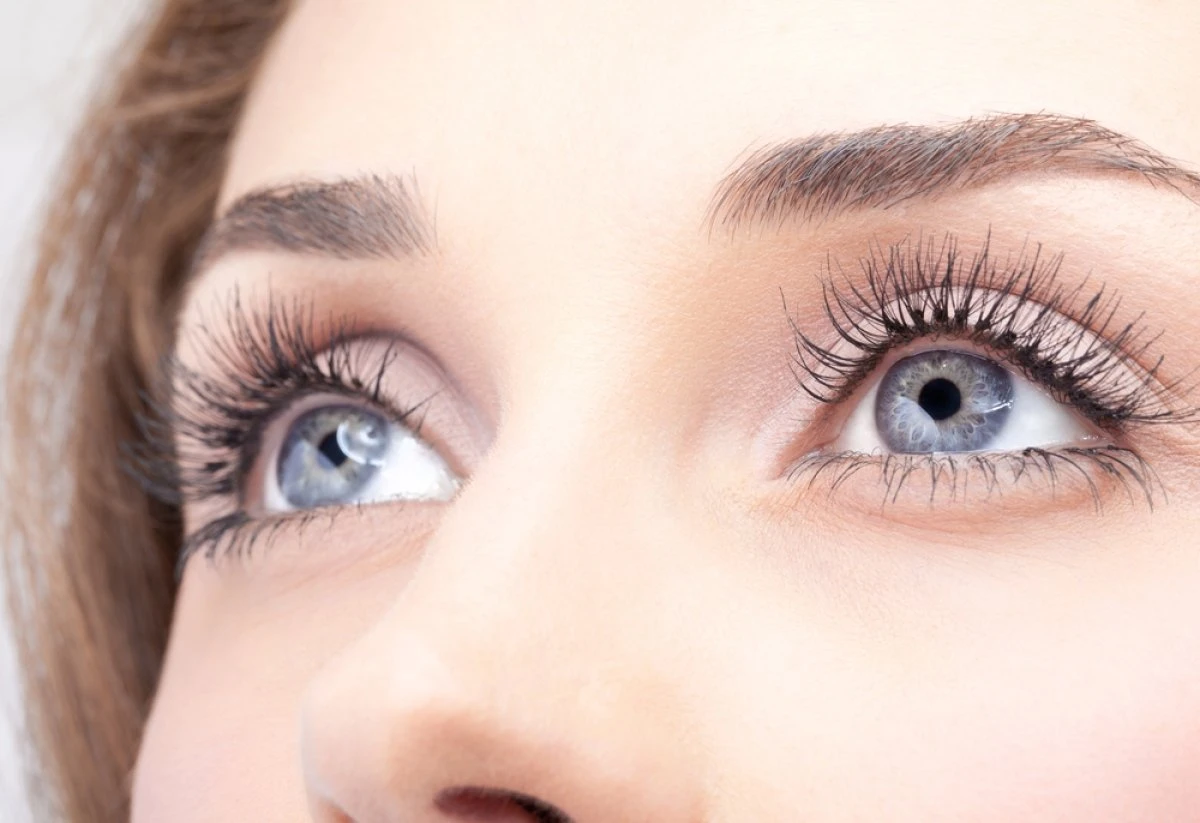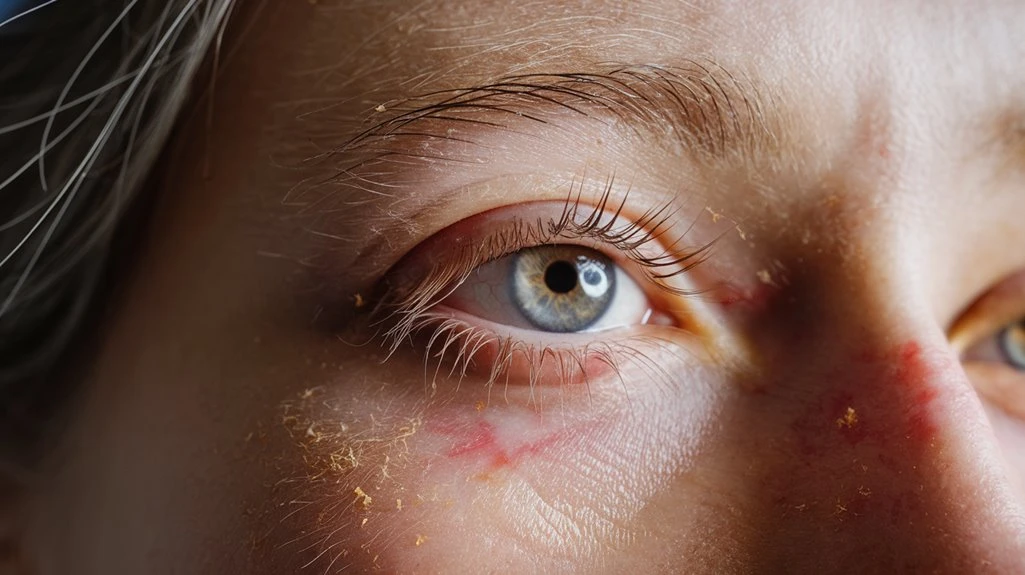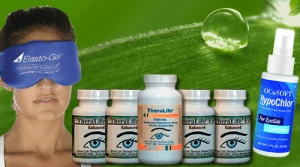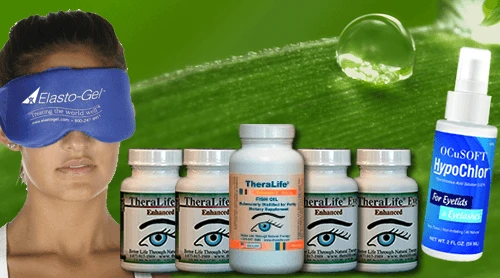TheraLife.com addresses the connection between blepharitis and dry eyes through its comprehensive range of products aimed at enhancing eye health. Their offerings focus on reducing eyelid margin inflammation, improving meibomian gland function, and stabilizing the tear film’s lipid layer, which are crucial for managing both conditions. By targeting these areas, TheraLife’s products help minimize symptoms like irritation, redness, and fluctuating vision.
Their holistic approach includes dietary supplements, anti-inflammatory solutions, and natural remedies, all designed to break the cycle of chronic bacterial colonization and cytokine upregulation that often exacerbates these conditions. TheraLife’s treatments not only aim to reduce tear evaporation and increase tear production but also to boost mucin stability, thereby providing a more sustainable relief for those suffering from blepharitis and dry eyes.
By effectively managing one condition, TheraLife products have a positive impact on the other, ensuring a comprehensive approach to eye care and promoting overall ocular health.
Best Blepharitis Treatment From TheraLife- When Drops Don’t Work.
Key Takeaways
- Both blepharitis and dry eyes share overlapping symptoms like irritation, burning, and a gritty sensation due to tear film instability.
- Meibomian gland dysfunction in blepharitis reduces lipid secretion, increasing tear evaporation and leading to evaporative dry eye symptoms.
- Inflammation from blepharitis disrupts tear film composition, further destabilizing the ocular surface and aggravating dry eye symptoms.
- Bacterial overgrowth in blepharitis alters tear quality, promoting inflammation and tear film breakdown associated with dry eyes.
- Lid margin disease in blepharitis compromises the protective barrier, exposing the eye to irritants and exacerbating dry eye complaints.
Understanding the Anatomy of the Eyelids and Tear Film
Eyelid anatomy plays a critical role in ocular surface health by supporting an even distribution of the tear film across the cornea.
You’ll find that the eyelid structure consists of several distinct layers, including the skin, orbicularis muscle, tarsal plate, and conjunctiva.
Embedded within the tarsal plate, the meibomian glands secrete the lipid layer of the tear film, which is essential in preventing tear evaporation.
The well-coordinated blinking motion guarantees mechanical spread of the tear film, while safeguarding the ocular surface from environmental debris.
Ideal tear composition depends on proper function of these eyelid structures—meibomian glands for lipids, lacrimal glands for aqueous components, and goblet cells for mucin.
Disruption to any component of this intricate system risks instability of the tear film and ocular surface compromise.
Aging and lack of sex hormones can negatively impact meibocyte function, leading to Meibomian Gland Dysfunction (MGD) and contributing to dry eye symptoms.
Common Signs of Blepharitis and Their Overlap With Dry Eyes
Several hallmark symptoms frequently characterize both blepharitis and dry eye disease, contributing to diagnostic challenges due to their considerable overlap.
You’ll notice that compromised eyelid hygiene disrupts the normal function of the meibomian glands, greatly impacting tear stability. Clinical manifestations often occur simultaneously, making it essential for practitioners to identify overlapping signs.
Common symptoms include:
- Grittiness or foreign body sensation
- Chronic redness along the lid margin
- Burning or stinging ocular discomfort
- Crusting or scaling at the lash base
- Fluctuating visual acuity, often due to unstable tear film
These shared features complicate the distinction between primary blepharitis and dry eye disease.
Accurate recognition of these overlapping signs is essential for individualized management strategies, including enhanced eyelid hygiene and interventions targeting tear stability for ideal patient outcomes. Tear film osmolarity serves as a diagnostic biomarker for dry eye severity, which can further aid in differentiating between the two conditions.
Inflammation Pathways Affecting the Ocular Surface
Although blepharitis and dry eye disease manifest with similar clinical signs, they’re both rooted in complex inflammation pathways that directly impact the ocular surface.
When you encounter inflammation triggers—such as microbial colonization, environmental irritants, or immune dysregulation—your ocular surface initiates a series of cellular responses. These include upregulation of pro-inflammatory cytokines and recruitment of leukocytes to the eyelid margin and conjunctiva.
This cascade leads to disruption of the epithelial barrier, destabilization of the tear film, and heightened cellular stress. A contributing factor to dry eyes can be autoimmune diseases which often involve self-attack on healthy tissues and can lead to increased inflammation responses. As these ocular surface responses intensify, you can experience increased redness, irritation, and compromised visual function.
Understanding the interplay of these inflammation pathways is essential, since ongoing activation magnifies both symptoms and disease progression in blepharitis and dry eye, establishing a cyclical pathology that’s difficult to break.
The Role of Meibomian Gland Dysfunction
You’ll recognize that Meibomian gland dysfunction leads to disruption of the tear film’s oil layer, increasing evaporation and tear instability.
When these glands become obstructed, lipid secretion decreases, further exacerbating ocular surface inflammation.
This process directly links gland blockage to the pathogenesis of both blepharitis and evaporative dry eye disease.
Regular eye checks are recommended to monitor MGD progression and allow for timely adjustments in treatment plans.
Oil Layer Disruption
When the meibomian glands fail to secrete adequate or healthy oils onto the tear film, the integrity of the eye’s lipid layer becomes compromised, accelerating tear evaporation and destabilizing the ocular surface. Oil secretion deficiency is a direct consequence of meibomian gland dysfunction—often precipitated by eyelid inflammation associated with blepharitis. This disruption alters the tear film’s protective function, leading to increased osmolarity and inflammatory mediators that exacerbate ocular discomfort. You’ll observe that insufficient oil layer presence can result in:
- Increased tear evaporation rates
- Greater exposure of the ocular surface to environmental irritants
- Elevated tear film breakup time
- Heightened risk for corneal epithelial injury
- Amplification of inflammatory signals within the eyelid margin
Ultimately, stabilizing oil secretion is critical for preserving tear film homeostasis in blepharitis and dry eye management. The use of Omega-3 Fish Oil can help thicken natural tears and prevent evaporation, thereby supporting the integrity of the tear film.
Gland Blockage Effects
Beyond oil layer disruption, gland blockage further impairs the tear film’s stability. When your meibomian glands don’t function properly, oil secretion is diminished or altered, resulting in inadequate lipid coverage on the ocular surface. This dysfunction in gland function promotes tear evaporation and destabilizes the tear film, intensifying both blepharitis and dry eye symptoms. You may experience increased discomfort, redness, and visual fluctuations due to this compromised barrier. Additionally, pro-inflammatory cytokines are elevated in dry eye patients, contributing to ocular surface inflammation and discomfort. Examine the impact of gland blockage in the table below:
| Gland Blockage | Oil Secretion | Tear Film Stability |
|---|---|---|
| Present | Reduced | Decreased |
| Absent | Normal | Maintained |
| Partial | Inconsistent | Fluctuating |
| Severe | Absent | Severely Compromised |
| Mild | Slightly Altered | Mildly Reduced |
Understanding and addressing meibomian gland dysfunction is essential for effective treatment.
Best Blepharitis Treatment From TheraLife- When Drops Don’t Work.
How Bacterial Growth Alters Tear Quality
Although blepharitis often involves chronic inflammation at the eyelid margins, bacterial proliferation plays a decisive role in disrupting normal tear composition.
When bacteria colonize the eyelid, they form a bacterial biofilm, which secretes toxins and enzymes that degrade the quality of the tear film. This biofilm alters the biochemical environment, negatively impacting your tear film composition and resulting in ocular surface instability.
Specifically, you’ll find that bacterial metabolic byproducts increase tear film osmolarity and promote inflammation. Regular eyelid scrubs with baby shampoo or over-the-counter cleansers can help remove bacterial debris and manage symptoms of blepharitis.
Consider the ways bacterial growth modifies your tear quality:
- Releases lipases and proteases degrading tear components
- Elevates pro-inflammatory cytokines in tear fluid
- Increases tear film osmolarity, stressing epithelial cells
- Alters mucin layer essential for tear film stability
- Interrupts normal antimicrobial defense mechanisms
Addressing bacterial biofilm is essential for maintaining stable tear film composition.
Disruption of Lipid Layer and Tear Evaporation
If the lipid layer of your tear film becomes disrupted, the rate of tear evaporation sharply increases, compromising ocular surface integrity. In blepharitis, inflammation of the eyelid margins frequently leads to meibomian gland dysfunction, altering the quality and composition of the secreted lipids. This lipid imbalance hampers the formation of a uniform, stable superficial tear layer, diminishing the protective barrier that normally reduces evaporation. As a result, you experience a significant decrease in tear stability, leaving the ocular surface exposed and vulnerable to environmental stressors. This direct relationship between compromised lipid layer integrity and increased evaporation is well-documented in clinical literature, supporting the connection between blepharitis and evaporative dry eye disease. Addressing lipid imbalance is therefore essential for restoring ideal tear film function. Additionally, poor eyelid hygiene can exacerbate symptoms, making it crucial to maintain cleanliness to prevent inflammation and further complications.
Chronic Irritation and Its Impact on Tear Production
Persistent inflammation along the eyelid margins directly stimulates ocular surface nerves and perpetuates a cycle of chronic irritation, which can adversely affect tear production over time.
When you experience chronic inflammation from blepharitis, it disrupts the normal function of the lacrimal glands, leading to inadequate tear secretion and compromised tear stability. This process compromises the ocular surface environment, making the eyes more susceptible to dryness.
Ongoing irritation sends continuous nociceptive signals, amplifying local immune responses and exacerbating glandular dysfunction.
Clinical evidence demonstrates several key mechanisms linking chronic inflammation to reduced tear volume:
- Direct injury to lacrimal acinar cells
- Upregulation of pro-inflammatory cytokines
- Increased epithelial permeability
- Dysfunctional neural feedback to secretory pathways
- Enhanced apoptosis within secretory tissues
You’ll notice worsened dryness if chronic irritation remains unaddressed. In addition, poor eyelid hygiene can exacerbate blepharitis symptoms by allowing bacterial growth, further contributing to inflammation and dryness.
The Influence of Blepharitis on Mucous Layer Stability
In addition to disrupting tear production, blepharitis exerts a significant impact on the mucous layer of the tear film. You’ll find that blepharitis triggers inflammation at the eyelid margins, where goblet cells produce mucins essential for mucous layer stability. This disruption leads to an unstable tear film that can no longer uniformly coat and protect the corneal epithelium. Deficiency or alteration in mucins, often seen in chronic blepharitis, compromises tear adherence and promotes rapid tear film breakup. Regular eyelid hygiene is crucial to minimize symptom recurrence, as it helps manage the chronic bacterial colonization that contributes to mucin degradation. Here’s a concise overview:
| Blepharitis Trigger | Mucous Layer Change | Clinical Outcome |
|---|---|---|
| Lid margin inflammation | Goblet cell dysfunction | Decreased mucin secretion |
| Chronic bacterial colonization | Mucin degradation | Tear film instability |
| Sebaceous gland dysfunction | Altered mucous profile | Faster tear evaporation |
Recognizing this mucous layer instability is fundamental in understanding the dry eye correlation.
Managing Both Conditions Simultaneously
You should implement coordinated eyelid hygiene routines to address both blepharitis and dry eye symptoms efficiently.
Tailor pharmacologic and non-pharmacologic interventions based on individual disease severity and response to treatment.
Consistently monitor symptom progression to optimize therapeutic outcomes and adjust management plans as needed.
Coordinated Eye Hygiene Routines
Although blepharitis and dry eye often occur together, integrating a coordinated eye hygiene routine targets both disorders more efficiently than treating each one in isolation.
By emphasizing evidence-based eye care and consistent hygiene practices, you reduce lid inflammation, remove microbial load, and improve tear film stability. Effective interventions disrupt the inflammatory cycle characteristic of both conditions.
To maximize therapeutic benefit, adopt these coordinated actions:
- Clean the eyelid margins daily using sterile wipes or diluted baby shampoo.
- Apply warm compresses to liquefy meibomian gland secretions.
- Gently massage lids to promote glandular drainage and sebum clearance.
- Avoid rubbing your eyes, minimizing trauma and allergen exposure.
- Maintain strict hand hygiene to limit the introduction of pathogens.
These coordinated actions form the cornerstone of preventative and symptomatic management.
Tailored Treatment Strategies
Building upon coordinated hygiene routines, tailored treatment strategies target the underlying pathophysiology of both blepharitis and dry eye, addressing inflammation, glandular dysfunction, and tear film instability concurrently. You’ll benefit most from tailored therapies calibrated to the unique subtype and severity of each condition, utilizing anti-inflammatory agents, meibomian gland expression, and tear film substitutes in a synergistic protocol. Clinicians emphasize individualized care to modulate disease drivers and optimize ocular surface homeostasis. Employing evidence-based combinations of pharmacologic and procedural interventions enhances efficacy and mitigates chronicity.
| Treatment Category | Blepharitis Focus | Dry Eye Focus |
|---|---|---|
| Anti-inflammatories | Lid margin inflammation control | Ocular surface relief |
| Glandular Therapies | Meibomian expression, warm compress | Lipid layer restoration |
| Tear Stabilizers | Address associated instability | Artificial tear supplements |
| Adjunctive Measures | Antibiotic ointments | Omega-3 supplementation |
Monitoring Symptom Progression
Since blepharitis and dry eye frequently share overlapping symptoms and pathophysiology, systematic monitoring becomes essential to distinguish therapeutic efficacy from fluctuating baseline discomfort.
You should implement robust symptom tracking protocols to evaluate intervention impact and disease fluctuation. Patient diaries are effective tools, allowing you to document daily changes, contributing factors, and treatment responses. This approach supports clinicians in recognizing patterns and adapting management plans when necessary.
To optimize outcomes, guarantee you:
- Record ocular discomfort intensity and frequency
- Note specific triggers (e.g., environmental changes, screen use)
- Track adherence to prescribed therapies
- Monitor associated signs, such as eyelid swelling or discharge
- Document usage patterns for artificial tears and warm compresses
Proactive, structured monitoring empowers you and your healthcare provider to make informed, timely modifications for both blepharitis and dry eye management.
Best Blepharitis Treatment From TheraLife- When Drops Don’t Work.
Frequently Asked Questions
Is Blepharitis Contagious or Spreadable to Others?
You might wonder about blepharitis transmission.
Blepharitis itself isn’t generally considered contagious, so you usually can’t spread it to others.
However, in rare cases where it’s linked to a bacterial infection, it’s theoretically possible for bacteria to transfer through direct contact, shared towels, or cosmetics.
While the risk is low, practicing good eyelid hygiene and not sharing personal items greatly reduces any chance of inadvertent transmission.
Always consult your eyecare provider for guidance.
Can Dietary Changes Help Reduce Blepharitis-Related Dryness?
You can support blepharitis-related dryness by implementing dietary changes, particularly through evidence-based dietary supplements like omega-3 fatty acids.
These supplements have demonstrated efficacy in inflammation reduction within the meibomian glands, enhancing tear film stability. Clinical studies suggest that antioxidants and a balanced intake of essential fatty acids modulate inflammatory mechanisms.
Always consult your ophthalmologist before initiating supplement regimens, so interventions appropriately target the inflammatory processes contributing to ocular surface disease.
Are Contact Lens Wearers at Higher Risk for Blepharitis and Dry Eyes?
Yes, as a contact lens wearer, you’re at elevated risk for both blepharitis and dry eyes.
Frequent lens use can disrupt the tear film and foster bacterial colonization along the lid margins. By prioritizing meticulous contact lens hygiene, you reduce these risks and contribute to effective blepharitis prevention.
Evidence shows that improper hygiene practices exacerbate meibomian gland dysfunction and increase ocular surface inflammation, underlining the importance of superior lens care.
How Do Seasonal Allergies Impact Blepharitis Symptoms and Dry Eyes?
When you encounter allergy triggers during certain seasons, your immune response can exacerbate blepharitis symptoms and dry eyes.
Allergens induce ocular inflammation and increase eye irritation, leading to intensified redness, itching, and tear film instability. The allergic response often promotes excessive mucus and meibomian gland dysfunction, compromising lipid layer integrity.
Consequently, you’ll notice worsened discomfort and visual disturbance. Managing environmental exposure and utilizing antihistamine or mast cell stabilizer therapies can mitigate these effects.
What Are the Long-Term Complications of Untreated Blepharitis?
If you leave blepharitis untreated, you risk developing chronic inflammation of the eyelid margins, leading to structural changes like trichiasis and entropion.
Meibomian gland dysfunction may worsen, contributing to persistent tear film instability. Without proper eyelid hygiene, chronic irritation can cause conjunctival scarring and increase infection risk, such as hordeolum or chalazion.
Over time, you may experience corneal neovascularization, ulceration, or even vision impairment due to progressive ocular surface disease.
Best Blepharitis Treatment From TheraLife- When Drops Don’t Work.
Conclusion
If you’re experiencing blepharitis, it’s crucial to manage the balance between inflammation, meibomian gland dysfunction, and tear film stability to prevent dry eyes. TheraLife.com offers a range of products designed to address these issues, improving ocular surface health by targeting the root causes of dry eyes and blepharitis.
TheraLife’s products are formulated to enhance tear production, maintain the integrity of the tear film, and reduce inflammation, providing symptom relief and long-term comfort. By understanding the intricate connections between blepharitis and dry eyes, their solutions aim to restore balance and improve overall eye health.
For those dealing with blepharitis and its associated symptoms, TheraLife offers natural and effective treatments. Their comprehensive approach includes addressing underlying issues such as bacterial overgrowth and lipid layer instability, ensuring a holistic solution to eye discomfort. With TheraLife’s targeted therapy, you can improve your eye health and enjoy relief from both blepharitis and dry eyes.





